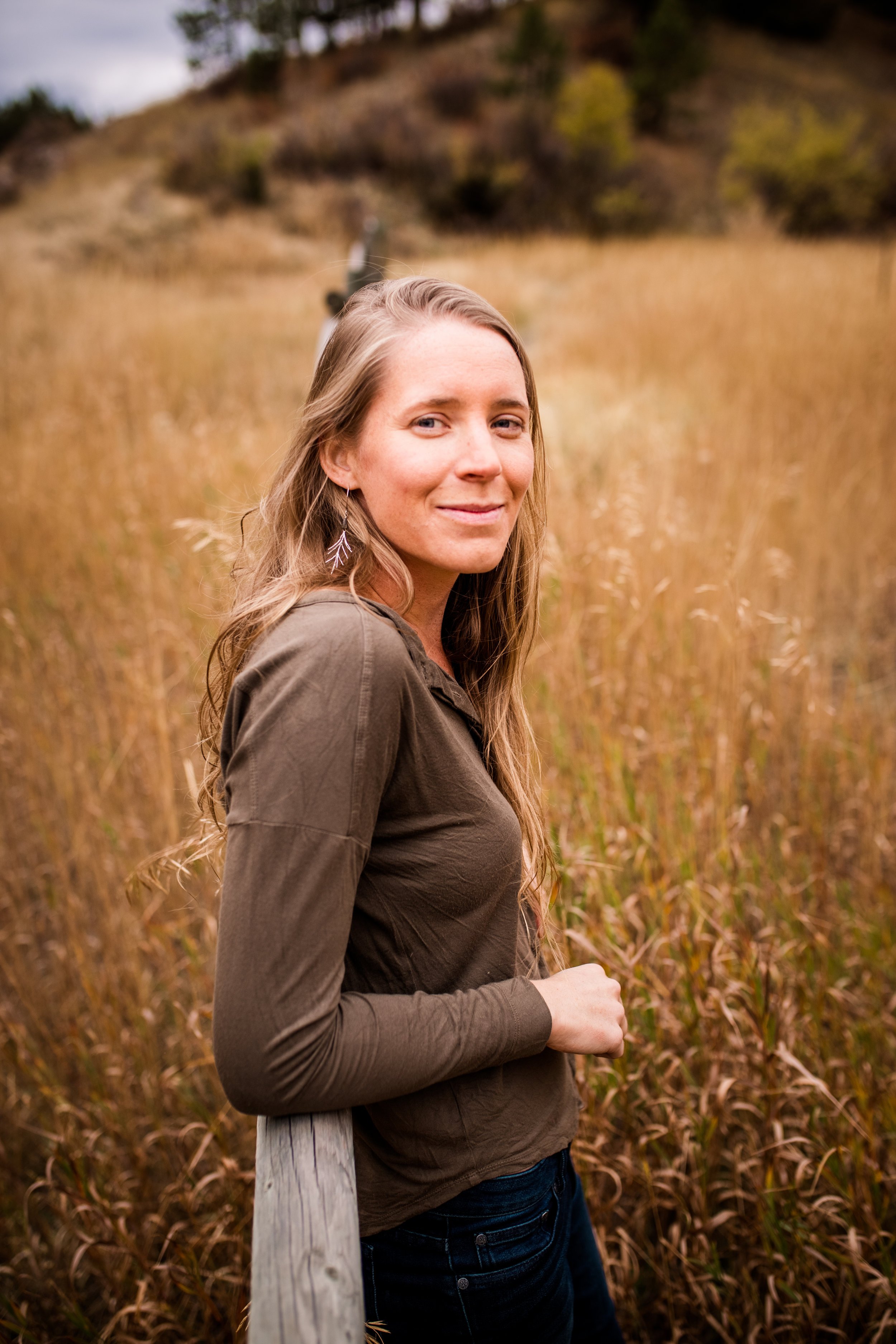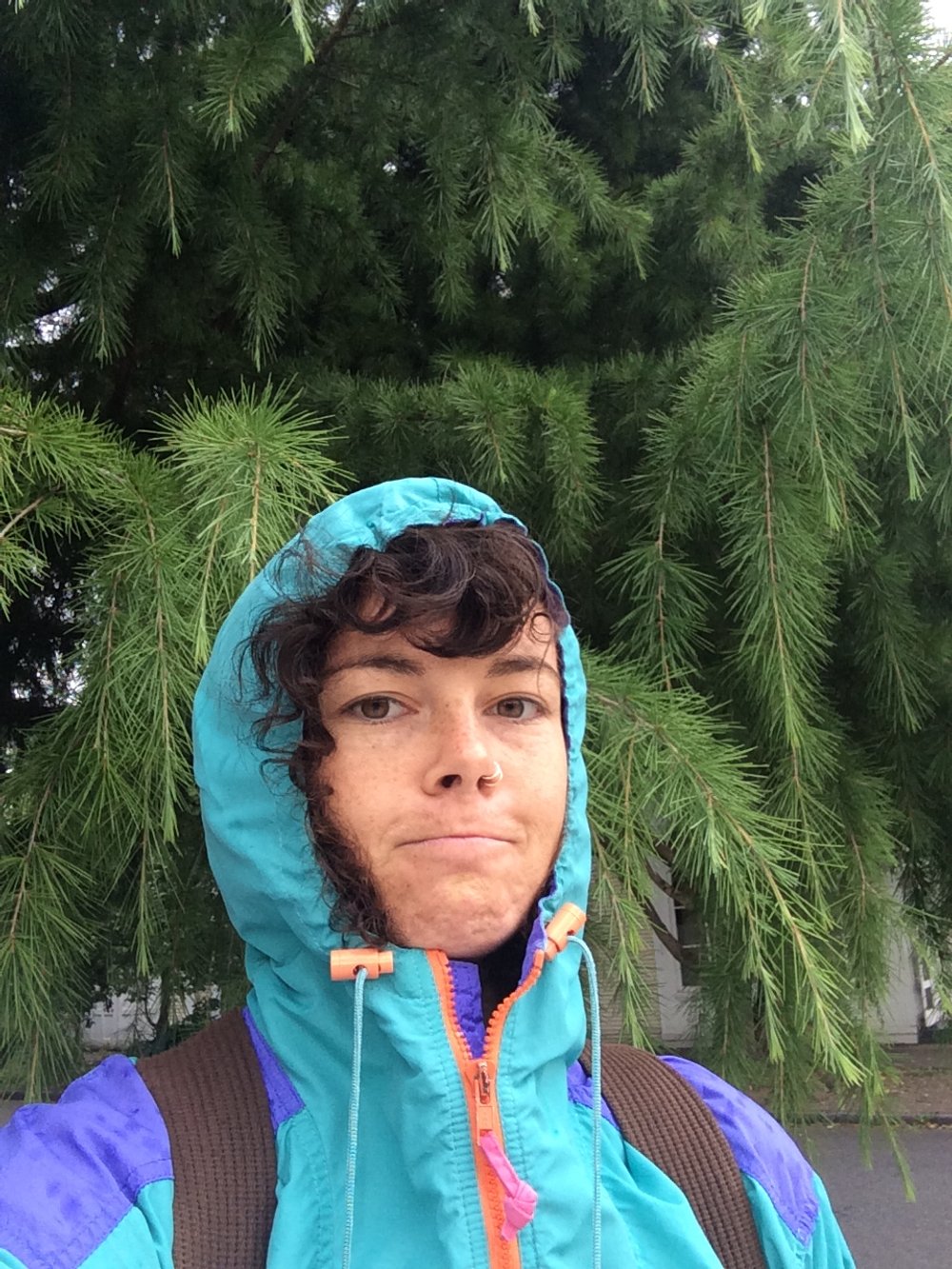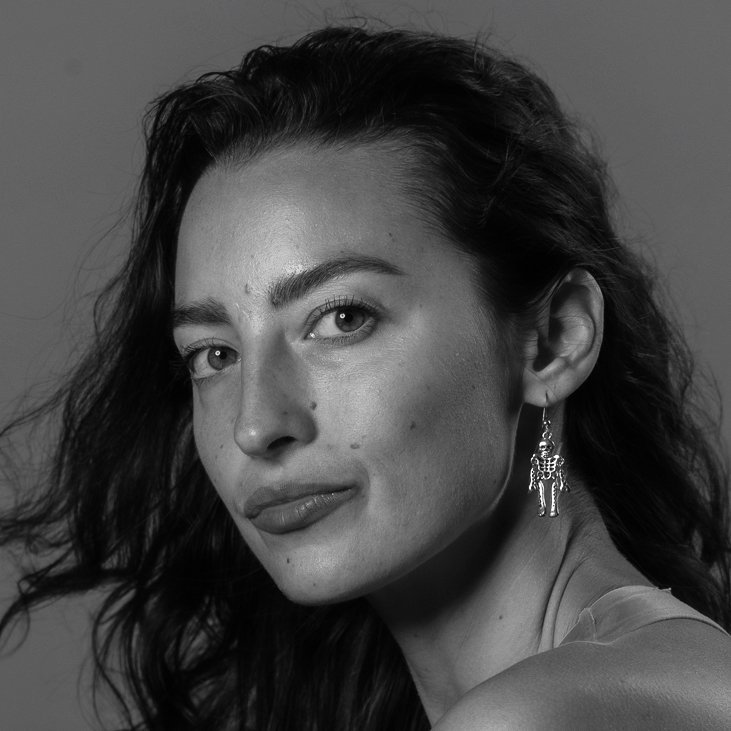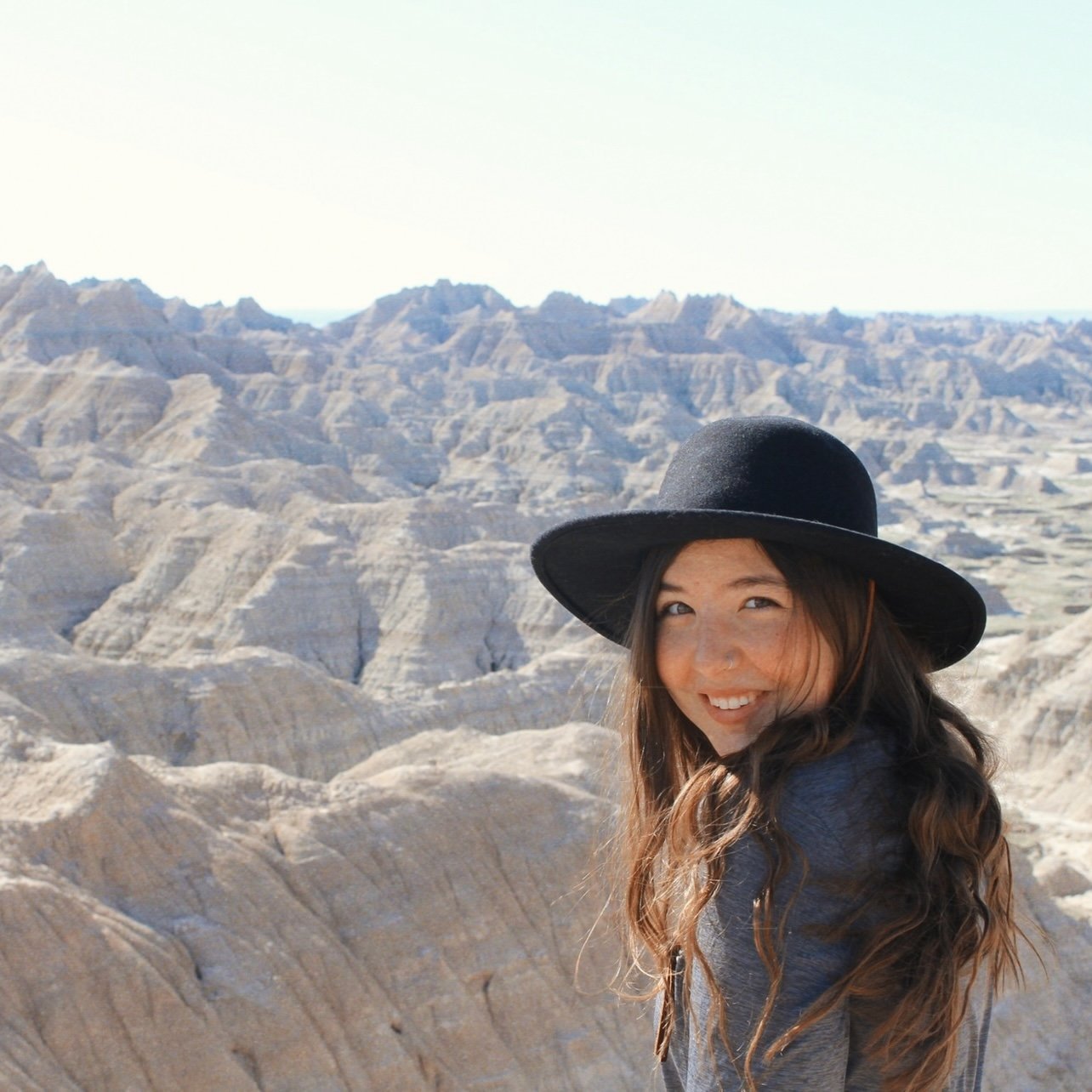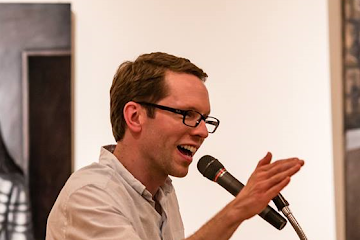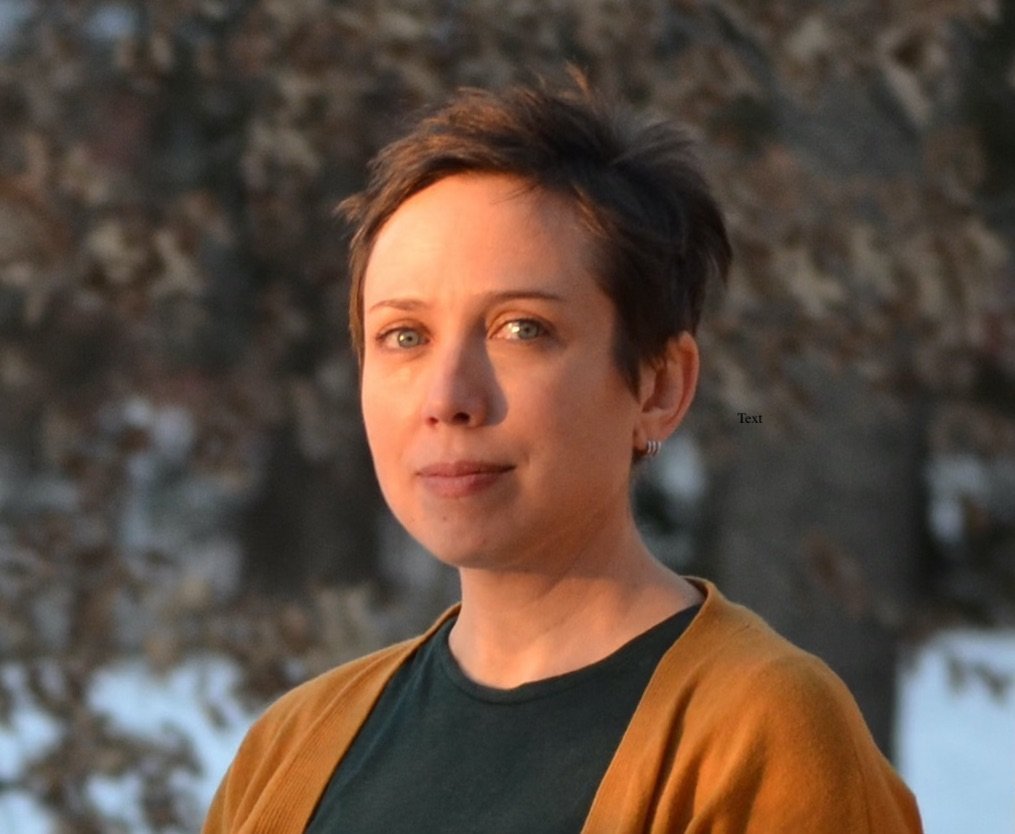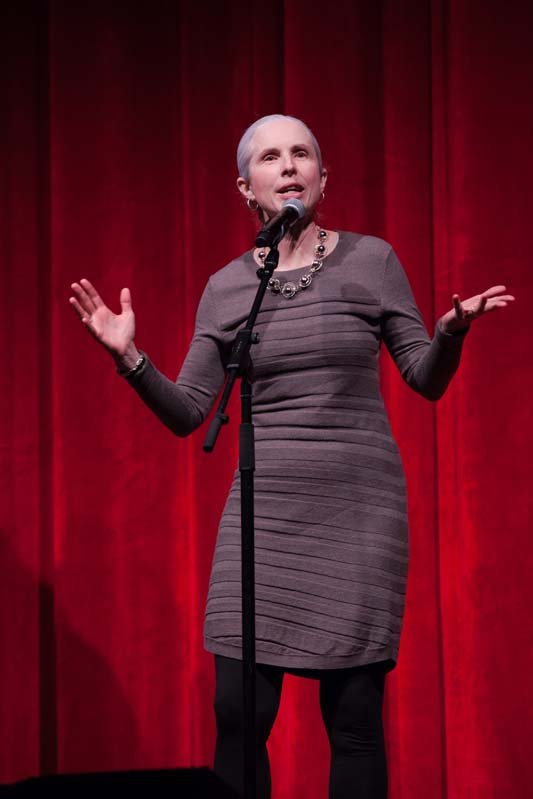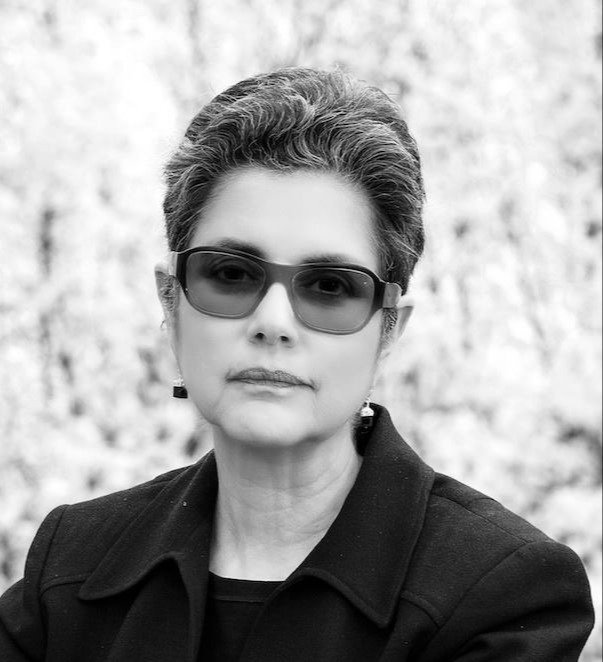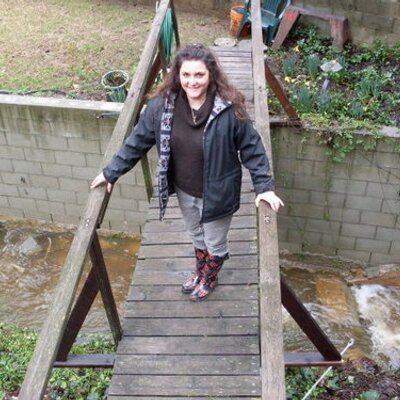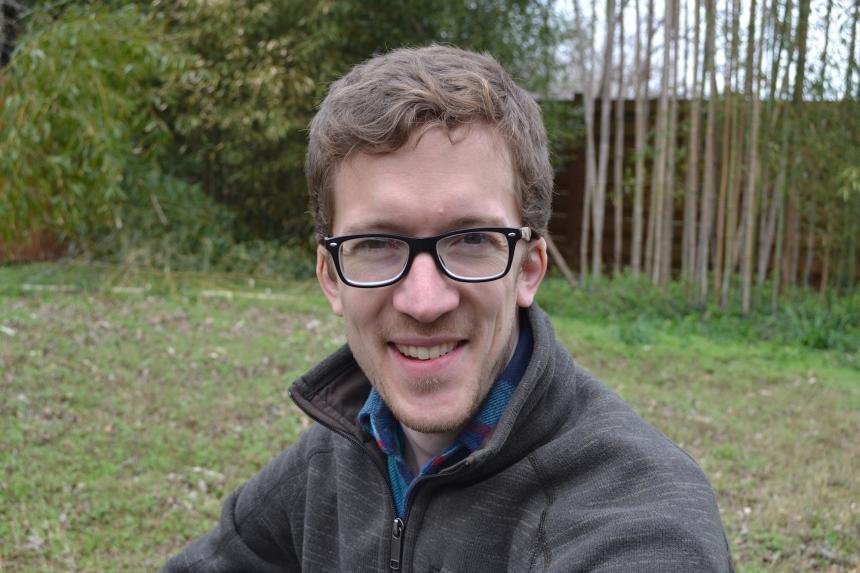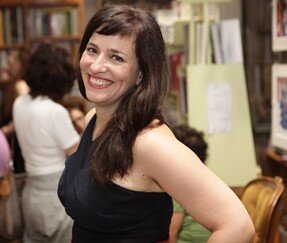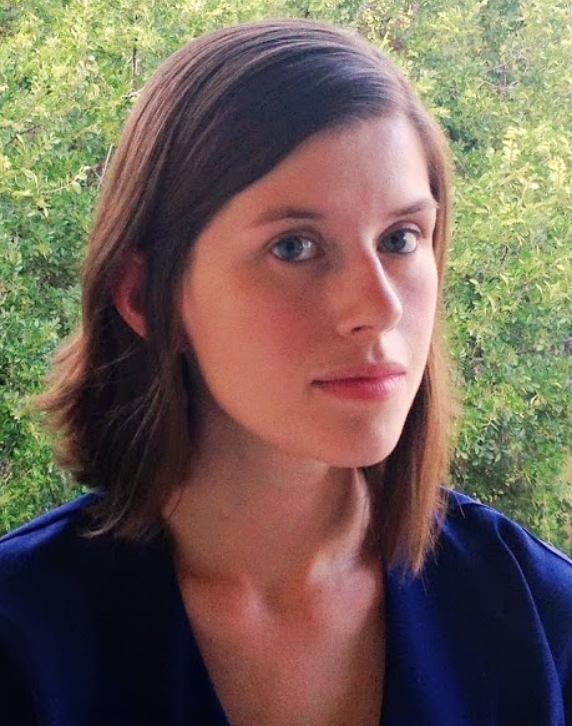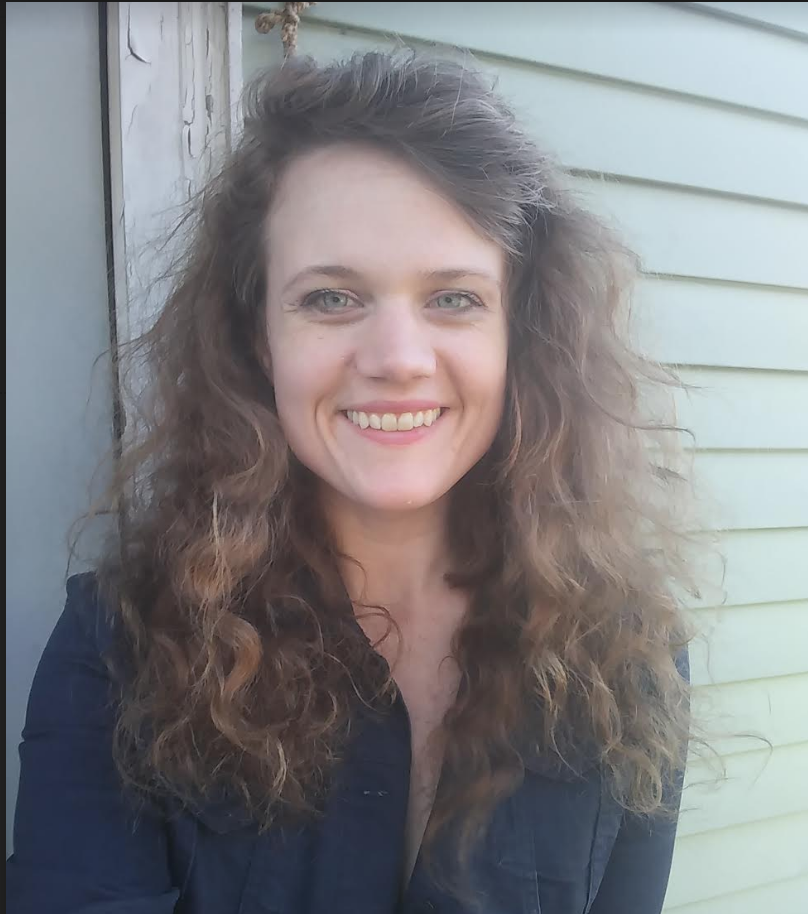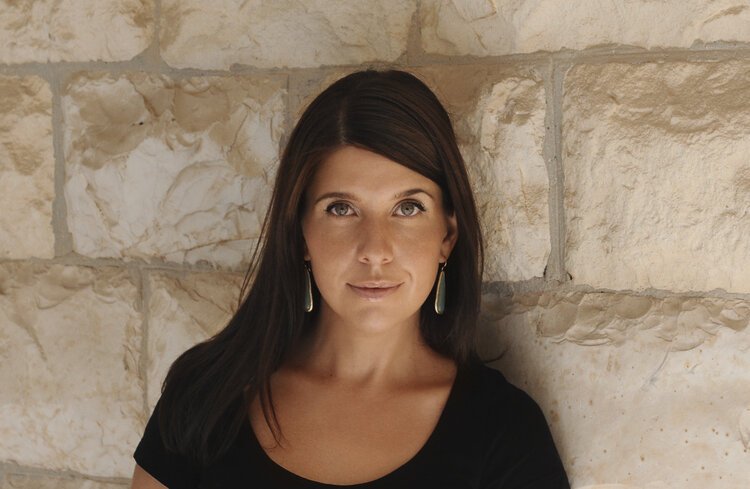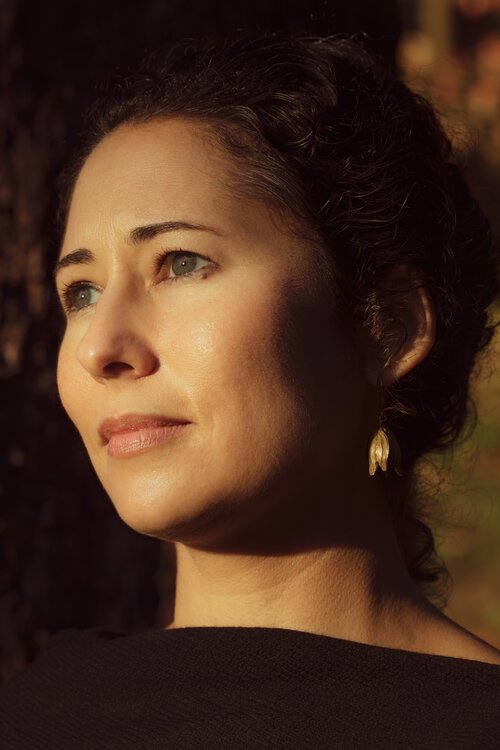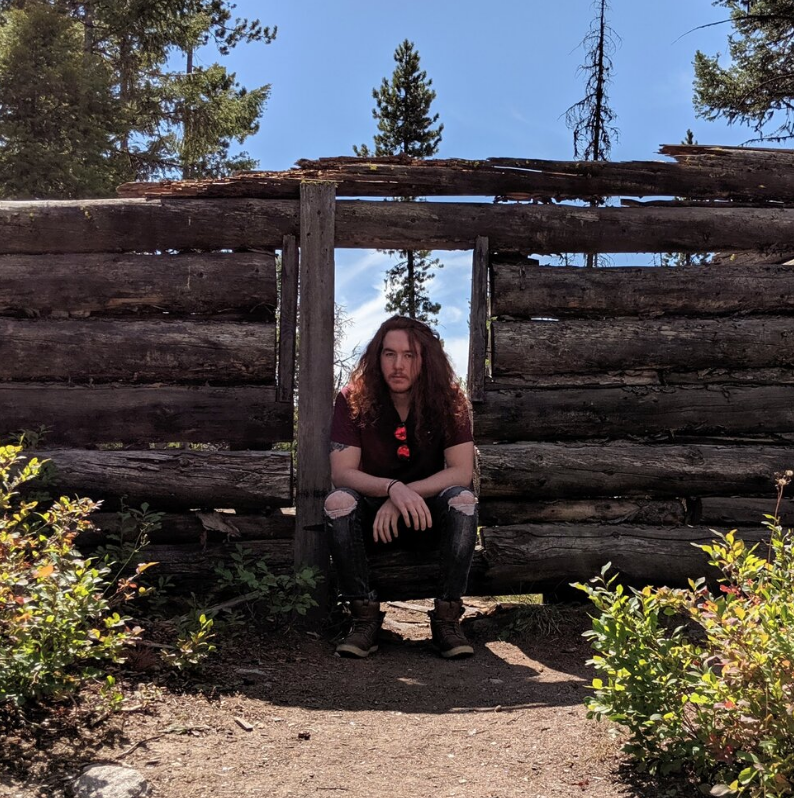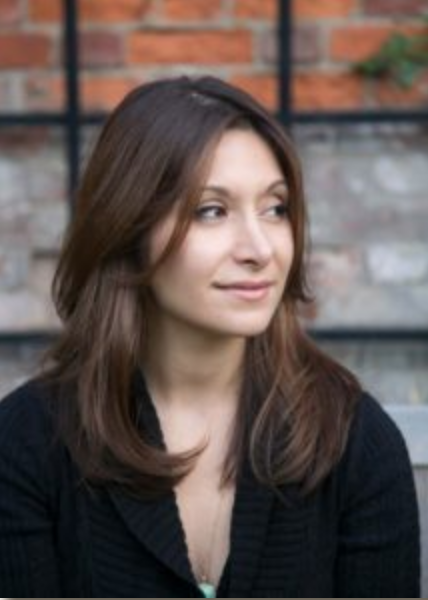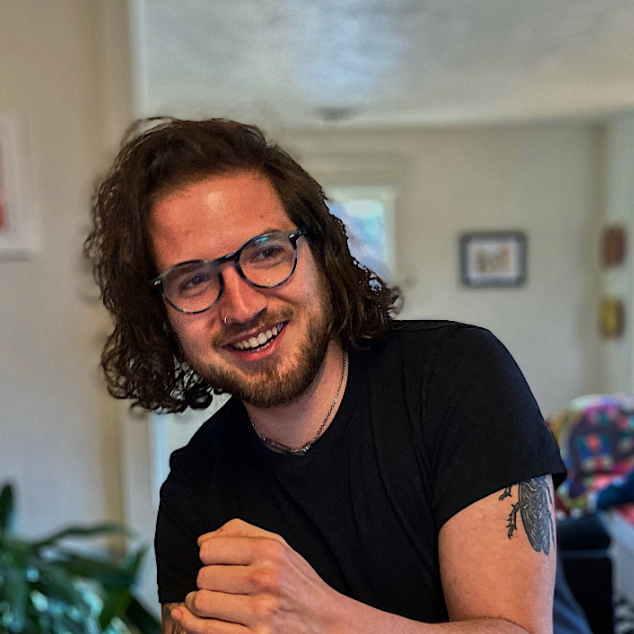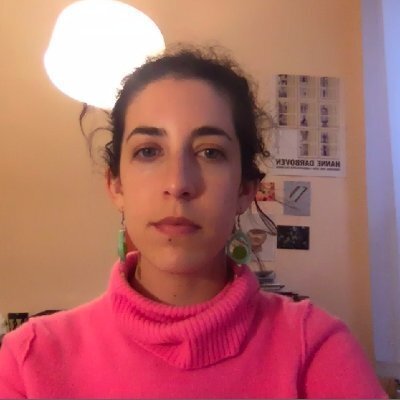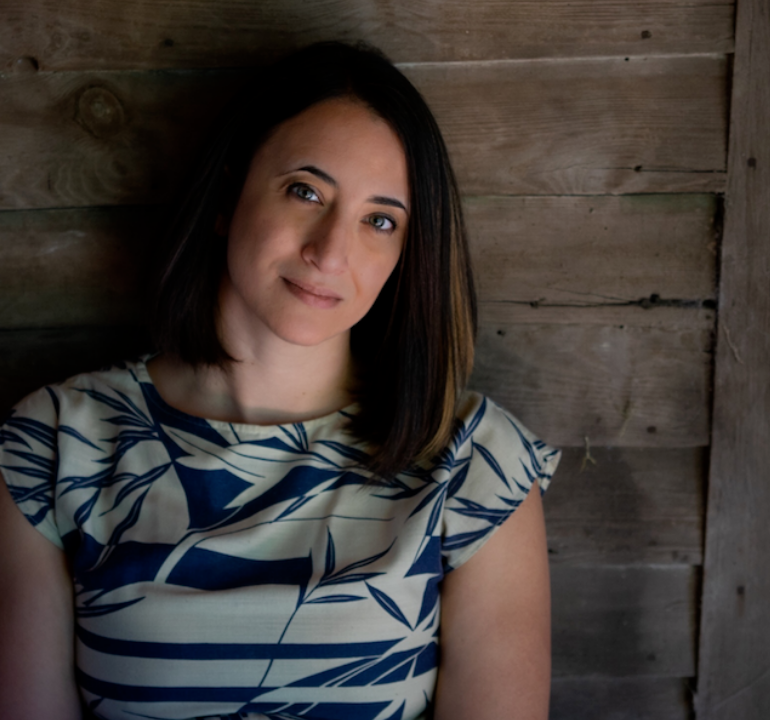A Conversation with Chris Dombrowski
by Tommy D’Addario
Photo credit: Chris La Tray
Chris Dombrowski’s latest book of poems, Ragged Anthem, weds the poet’s obsessions of music and poetry in transcendent verse. He borrows song lyrics both internationally-known and relatively obscure to title many of these poems, invoking the wisdom of Joni Mitchell, Elton John, and The Tallest Man on Earth, to name a few. Chris and I met in a hip wine bar in downtown Missoula where everyone seemed to know the amiable writer, stopping by the table to say hello.
We began discussing our shared pathways (separated by some years) from our childhoods in eastern Michigan, our undergraduate educations at Hope College in Holland, Michigan, and now (though perhaps not finally) to our current home of Missoula, Montana. This connection made Chris think of the thirteenth-century philosopher, theologian, and mystic, Meister Eckhart. Thus our interview began, not with a question, but in medias res.
(Note: Chris frequently quoted friends and writers during our interview. The poet would like the reader to know these quotes were from memory and off the cuff; many quotes should not be considered strictly accurate.)
Chris Dombrowski: I first encountered Eckhart through the poetry of Norman Dubie. He had an old book called The Clouds of Magellan. It was a really brilliant book of aphorisms. He had this one quote I attached to early on; Eckhart said something like, “Blessed are they who have heard this meditation. Had there been no one here I would have preached it to the poor box.” And Dubie says in essence, if you don’t understand what that means you can never be a poet. So who knows? We probably have more connection than we can know.
Tommy D’Addario: You use lyrics from various popular songs as titles to these poems. You’ve also mentioned the importance of music to your poetry and your life, in general. When and how did you see this project unfold?
CD: I had a great high school teacher that forced us to examine song lyrics as poetry, as art. That was probably my first introduction to poetry. My parents weren’t musicians but my dad listened to a lot of music, so I was naturally inclined to memorize song lyrics. I remember a time after Paul Simon’s Graceland came out, driving to Florida with my parents listening to the album on repeat, thinking for the first time, Wow, this is amazing. Almost what I’d call my first encounter with that form of art.
Much later I was teaching at Interlochen Center for the Arts and the wonderful poet Kwame Dawes came up to give a reading. (He also wrote the definitive book on the lyrics of Bob Marley, Natural Mystic.) We took a walk one day, talking about our favorite Paul Simon lines, quoting them back and forth to each other for some forty-five minutes. I remember thinking, Okay, so I’m not the only one who thinks songwriting is an art that is occasionally on par with poetry. Soon after I started harkening back to my old teacher Jim Colando, and began using song lyrics as titles in this collection. Eventually I found that not all of them worked the way I thought they would. I thought some lyrics would have universal meaning, but they didn’t. When poet Jenny Montgomery read the manuscript, she’d circle certain lyrics and research the artist, showing me the lyrics didn’t hold up, that some of the connections were too personal.
Others weren’t. The poem, “Just a little green, like the nights when the northern lights perform”, comes from a Joni Mitchell line. The lyric offers some context as the poem contains images of the northern lights and is also about youth, so perhaps the notion of “green” starts to resonate as well. If you think of Joni Mitchell in that context, her album Blue is permeated with this sense of broken love and longing. So I was hoping at their best that the lyrics would do that, put a glaze over the poem itself. Sometimes I think they did, sometimes they don’t.
There’s a poem in there called “Poem in Which I Lose My Wish to Drown,” which is a poem about deliverance. The title is a line from The Tallest Man on Earth. I was enduring a dark stretch. We were living on Lake Michigan and I was making these Rothko landscapes with my car window all the time. I was teaching creative writing at Interlochen, but I was fortunate to have a number of visual artists as students, too. On the lake one day I had this moment of profound encounter with what I deemed at the time to be the ghost of Rothko. This sounds crazy, I know, but I believe that places can contain the trace of experience in them. I believe that when we go to a place where trauma has been experienced, or awe, or wonder, that we can feel that—sensitive beings can feel that. So I was out in the middle of this bay, fishing alone, and it was dusk. I caught this fish and I was going to eat it. I gutted it, I cleaned it out, and it was a female fish and the roe spilled out onto the white floor of the boat. I was slammed by this feeling that Rothko wanted into the experience. My line was “Once again Rothko’s ghost / demands to inhabit my body.” And I really felt like that, that the spirit of the artist wanted to partake in the experience. Later, composing the poem, I came to the “epiphany” that what he desired was the color of these orange eggs spilling onto the white floor. But he couldn’t have it and I could, because I was still here, I was still on earth. So my own despondency, my own depression was met by the unassailable fact that I was alive, and that my living was something that the dead desired. So that was a poem that wouldn’t have come to me without that song lyric in my head.
TD: Your poem “Francis” meditates on a Catholic saint, Francis of Assisi. What influence do you find this spirituality having on your poetry?
CD: That Francis one is strange. I think a lot of poems in this book have an inherent strangeness to them. I think authentic spirituality surprises us. It has a level of the sublime or the unexpected. Back to Dogen; he says somewhere—and this is a bad paraphrase—“rote sayings and chants are not the way to liberation,” or something like that. I guess the interpretation is that you have to become open enough to the world striking you and finding you in a surprising way. I think that’s what the posture of poetry is: an openness, a vulnerability. The poet becomes a vessel for experiencing this particular incarnation at the deepest, most authentic level. Of course, you must pair that level of sensitivity with a rigor and technique that allows for the reader to comprehend, to feel enacted by the experience you’ve approached.
But back to Francis: I had a dear friend spend some time in Capuccini where Francis lived. Francis was a fascinating character because like the Buddha he was born into wealth, but he shunned the regal life. My friend brought me several little rocks from the grounds that I mention in the poem. I tried to dig them, hang with them, and see what they told. That poem is very straightforward, autobiographically.
TD: So that dream portion was an actual dream?
CD: It was. In the poem I say, “What happened next, I feel stirred to say, / was dream, not writing, not me writing now.” That wasn’t a gesture, that was straight. I wanted it to be clear that my creative energies had not entered the description of the dream. As a reader, you either believe it or you don’t, but I hope at that point in the poem that the ethos of the speaker has been established and the reader is inclined to believe it. That muddling of the statuesque Francis with the “living” one—a phantasm, as Eckhart would’ve called it—approaches the notion that iconography is perhaps more “attainable” than the flesh is. I just went with that. I liked, too, that the Francis character in the poem took on a multiple gender. It made me think about anima and animas, our true nature. It’s a strange poem, so I buried it near the back of the book, and buried within the poem is the notion that prayer is probably something we’re struck with, not something we’re taught.
“Any art requires vulnerability. Keats called it negative capability. The ability to be wounded, struck, to be dumbstruck out of whatever state you thought you’d earned. If you can’t let a poem hit you like that, then why write it?”
TD: And in Catholicism, saints act as intercessors for prayers.
CD: This gets to the notion of adoration; the James Galvin quote that opens the book is “Imagination is that around which / Mysteries assemble for devotion.”
TD: Who were some of your mentors?
CD: Mentors kind of find you where you are and show you a path to the next place. David James Duncan has become a dear friend of mine, really my first reader. I used to read his books in the basement of the Hope College library, and now he’s the closest of friends, an uncle to our children. My wife Mary and our children are mentors: kids weed out every level of self-importance that you have, and I have plenty of that, so there’s that. Jim Harrison came along at just the right moment.
TD: I know you two were close.
CD: Right. There was a book of his that hit me just at the right time. During my first book I was writing poems that were heavily imagistic and squeezed out of the tiniest of holes, producing a level of density that I’d begun to not really trust. I didn’t think they were very vulnerable. I think that any art requires vulnerability. Keats called it negative capability. The ability to be wounded, struck, to be dumbstruck out of whatever state you thought you’d earned. If you can’t let a poem hit you like that, then why write it? So Harrison published this book, In Search of Small Gods. It’s just a doozy, a reckoning of sorts for Harrison. He said that his whole life he had pursued the large, but age set in and began to demand that he shrink down and pay attention to the tiniest of things. It’s a sentiment I’ve since seen repeated in the eco-philosopher Paul Shepard as well, the notion that the “medicine” of these big animals is too much to take. Stick to the turtles, stick to the birds, stick to the moths and the butterflies, and they’ll tell you everything you need to know. Harrison writes very openly about what he calls the emissaries of the natural world, the rivers, trees, and creatures that help to transport him out of depressions. In a poem called “The Green Window” he says, “By accident my heart lifted with a rush.” It’s always by accident, right? The authentic always comes to us by accident. Going back to that Dogen notion, it’s not rote phrases or repeated prayers that lead us to enlightenment, but vulnerability to experience. That poem is about coming out of a long depression, and there’s a fair amount of Ragged Anthem that deals with mental instability. And Harrison says that poem is a record of deliverance which is never far away but often quite invisible.
TD: Your writing expresses some Buddhist teachings. Is that a big influence on your way of life?
CD: The universe is continually in flux, in change, so any hardening or intellectual cementing against that constant will screw with us. The one thing you see about the Buddha as a teacher and a leader is his ability to reshuffle his cards and change his original approaches to things. At one time he wasn’t letting women into discipleship, for instance, but after a few years he changed his mind. It’s a philosophy of embracing the constancy of change and not becoming rigid in one’s viewpoint.
Look at a male deer, a buck. It goes for a year and grows a button buck. Then it gets a spike. Then it sheds those antlers and it becomes a fork horn. Then it sheds those and becomes a basket buck, and so on. Nature is completely one with with the notion of revision and yet we as humans are not.
“Stick to the turtles, stick to the birds, stick to the moths and the butterflies, and they’ll tell you everything you need to know.”
TD: These poems contain a strong sense of place, alternating between Montana and Michigan. Do you still identify as a Midwesterner?
CD: I would describe places in Michigan to my friend, the poet Melissa Kwasny, and she said, “It sounds like a soft place.” And that’s a great description of it. But like the novelist Jeff Hull says, You go home to find out why you left. Adolescence is suffering. I had a great childhood, but even a good childhood is still suffering. You go back to a place like that and can’t help but wade through that. You can’t just push it aside. So I don’t consider myself a Midwesterner. There’s the Bob Hicok line, “I think of Michigan as the place I go to be in Michigan.” I love it, but I go there and think, “Where am I?” I’m glad there are a few “Michigan poems” in this book to pay homage to the place.
TD: The first section of the book uses the elegy form to meditate on experiencing the deaths of certain people throughout your life. But there is also an element of humor often mixed into these poems.
CD: I’m afraid of being earnest in poetry. I think it’s a bad stand-in for authenticity. So I try to use humor to mediate. I didn’t intend for this large a portion of the book to be elegiac when I started, but it popped out that way. I never refuse a poem when it comes to me; I try to write it and give it as much of myself as I can. Certain poems insist that they exist. The “Going Home” poem is an elegy for three of my friends from high school that all died at a similar time and also my grandfather who I only met once. It became a reckoning—here’s your long elegy, what are you going to do with it? And yet the living earth kept demanding its time on stage. There are two black wolves that appear in the poem. “Why are you insistent that the elegiac mode is a superior way to navigate the world?” to steal an idea from Robert Hass. It’s not.
I met those black wolves on the river one day. I’d been to visit Harrison and I was fishing the Boulder River. Black wolves in the Yellowstone area are part of the original strain, they’re not the reintroduced wolves, so they’re even more rare than the average wolf you’d see there. An alpha male and female crossed the river in front of me onto this hillside and began calling to their pack on the other side of the river. I couldn’t help but be moved by the proverbial symbolism of that. Here they were, calling back and forth to one another. So I went back to Jim’s for dinner. And whenever I went to Jim’s for dinner, I’d sit by his wife Linda, since she was always the smartest at the table. I’d begun to tell the story of this wolf encounter, and Linda set her glass of wine down, dumbfounded. She said, “Two black wolves singing in the middle of the day? Do you realize what that means?” It shook me out of myself. Again, I think on some level these creatures become emissaries transporting us out of our ego, or whatever state of ourselves that we need to transcend. Even in the midst of that poem as an elegy, these wolves are an anti-elegy. “Did you ever see a wolf?” I ask to my friend who was sawed in half by the men who murdered him, to whom he owed money for dealing drugs. He was thrown into the river in two halves.
So the first section contains the elegies. The second section is a little more of an encounter with the contemporary, if you will, to a hopefully humorous end or two. And the third section I think of as coming to terms with the feral creature-ness of family. Thankfully, we have three kids, so life is very much out of control. Life is more interesting that way than if we had some kind of, you know, grip on it.
TD: I saw heaven as a recurring theme throughout the book, especially the first section. Rivers are an important theme in the book as well—sites of death, sites of journey, of crossing.
CD: The river as a metaphor has a rich tradition in literature. You go back to Heraclitus saying you can’t step into the same river twice, which James Galvin riffs on, saying you can’t step into the same river even once, it’s always a different river. I spend enough time on rivers to know I might be floating a given stretch on a given day, say between Clear Water Junction and Roundup Rapids on the Blackfoot. But that’s a division that I’m making. The river is the same river literally from its headwaters all the way to the mouth—and this is the beautiful thing about the names of rivers—when the Blackfoot flows into the Clark Fork, it loses its name. When the Clark Fork flows into the Columbia it loses its name. The Columbia flows into the ocean, it loses its name. So this notion that we have some separate existence is really arbitrary. I was trying to get at the notion of time in “Going Home.” Our comprehension of it is just that—limited. A river has eternity built into its core.
Czeslaw Milosz has a great poem about the beauty of evening, and he says, essentially, “If eternity is eternity the way we were taught to believe it, and the light is consistent throughout it, then there wouldn’t be dawn, and there wouldn’t be evening, and that wouldn’t be fair, because it’s the most beautiful time of day, and that’s too tough a nut for a theologian to crack.” So I was trying to play a little with that in the first line. And then, ironically, James Galvin read this poem and told me to drop the first two lines—a little too telling. But I kept them because I like them.
TD: What is your anthem for today? What song has you obsessed?
CD: That’s funny—I get so addicted to music that I actually had to delete it all off my phone about a month ago. I’ll get into this fugue-ish way, I’ll listen to one song which makes me think of another song, and I’ll just go go go. And I’m working hard on this new nonfiction manuscript (which is actually past due), so I thought if I just listened to instrumental music it would be better for me, and it has been.
But a song that struck me a week or two ago was a Paul Simon off of his Hearts and Bones album, I think it’s called “Song About The Moon.” He says, “If you want to write a song about the moon, / walk along the craters of the afternoon, / when the shadows are deep and the light is alien / and gravity leaps like a knife off the pavement.” That’s kind of a perfect cross-section of what he’s always doing. I’m in constant debt to my friend (the musician) Jeffrey Foucault, who’s often sharing his new roughs with me, so I always have his new songs in mind. My wife Mary is picking up her guitar again after a hiatus. If I hear her play one song a night, I feel pretty happy. She plays this old Guy Clark tune a bit, “Dublin Blues,” which has a great line, a kind of lovely little ode to a sensibility I often see displayed here in Missoula. He says, “I’ve seen the David / the Mona Lisa, too / and I’ve heard Doc Watson play ‘Columbus Stockade Blues’.” He’s using parataxis to place the grandest art ever created on level with a solo by the bluegrass singer Doc Watson. So I’ve been thinking about that.
Chris Dombrowski is the author of the memoir Body of Water (Milkweed Editions), a Bloomberg News Best Book of 2016, as well as three full length collections of poetry, most recently Ragged Anthem (WSUP, 2019). His poems have appeared in over a hundred anthologies and journals including Guernica, Gulf Coast, Orion, Poetry, Poetry Northwest, and The Southern Review. For the better part of two decades, he has taught creative writing to a vast array of age groups, most recently as the William Kittredge Visiting Writer-in-Residence in the Environmental Studies Program at the University of Montana. He lives in Missoula, where he guides the rivers, directs the Beargrass Writing Workshops, and makes his home with his loveably feral family.
Tommy D'Addario was born in Detroit, Michigan, and has lived on both of the Mitten's coasts. He's a second-year poet in the MFA program at the University of Montana. His poetry has appeared or is forthcoming in Columbia Journal, Southern Indiana Review, Ruminate, and RHINO, and he has published fiction in The Susquehanna Review. He also holds a Lilly graduate fellowship.











